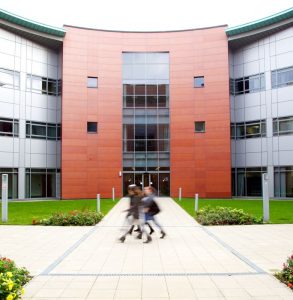 Anne Leyland a Lecturer in Midwifery at the University of Salford, has been shortlisted for the Sands Award for Bereavement Care at the Royal College of Midwives’ Annual Midwifery Awards.
Anne Leyland a Lecturer in Midwifery at the University of Salford, has been shortlisted for the Sands Award for Bereavement Care at the Royal College of Midwives’ Annual Midwifery Awards.
Anne devised the new method using the University’s extensive nursing and midwifery simulation suite because she said traditional teaching methods may not prepare students effectively to communicate sensitively and empathetically with parents who have experienced perinatal loss – the death of a baby in the womb or immediately after birth.
In the simulation scenario the midwifery students are assigned to support and care for the bereaved parents and respond to the concerns and anxieties they may have.
The parents’ parts are sometimes played by students from the Theatre and Performance Practice programme at the University’s School of Arts and Media.
The simulated scenario takes place in an area designed to look like a home birthing room and is streamed live and recorded so larger groups of students can watch. A debrief is then carried out by lecturers to help the students learn from and reflect on the experience.
The technique has received such positive feedback from students and health service colleagues that some NHS hospital trusts have discussed using it to provide additional training for their own staff.
Anne said: “Simulation offers us the ability to immerse students in a very realistic setting, so they’re able to play this out and think very deeply about the right things to say and do in that situation.
“This is absolutely devastating news for a pregnant woman and her partner, and the quality of the care they receive afterwards is crucial to their psychological recovery. The way the bereaved parents are treated by the health service can have a huge impact on them and on their future pregnancies.”
Anne will find out if she has won the award, sponsored by the Sands Stillbirth and Neonatal Death Charity, at the award ceremony held on 7 March 2017.
The birthing room is one of a number of simulated environments in the University’s Mary Seacole Building, including maternity units containing furniture from NHS suppliers along with electronic manikins representing birthing women which are able to move, speak and even blink and which can be controlled by skilled technicians.